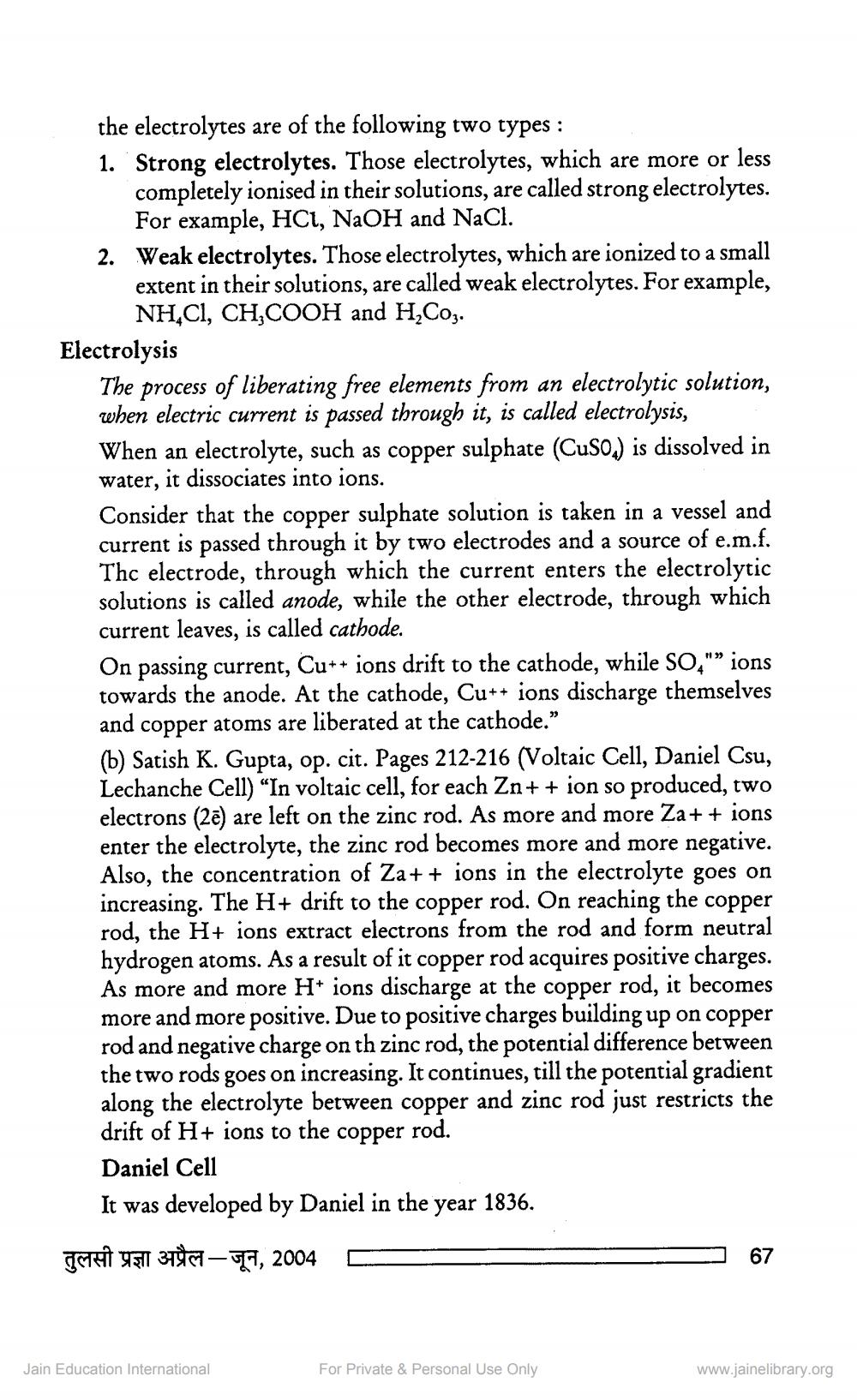________________
the electrolytes are of the following two types : 1. Strong electrolytes. Those electrolytes, which are more or less
completely ionised in their solutions, are called strong electrolytes.
For example, HCl, NaOH and NaCl. 2. Weak electrolytes. Those electrolytes, which are ionized to a small
extent in their solutions, are called weak electrolytes. For example,
NH,CI, CH,COOH and H,Co. Electrolysis
The process of liberating free elements from an electrolytic solution, when electric current is passed through it, is called electrolysis, When an electrolyte, such as copper sulphate (Cuso.) is dissolved in water, it dissociates into ions. Consider that the copper sulphate solution is taken in a vessel and current is passed through it by two electrodes and a source of e.m.f. Thc electrode, through which the current enters the electrolytic solutions is called anode, while the other electrode, through which current leaves, is called cathode. On passing current, Cu++ ions drift to the cathode, while SO,"" ions towards the anode. At the cathode, Cu++ ions discharge themselves and copper atoms are liberated at the cathode.” (b) Satish K. Gupta, op. cit. Pages 212-216 (Voltaic Cell, Daniel Csu, Lechanche Cell) “In voltaic cell, for each Zn+ + ion so produced, two electrons (27) are left on the zinc rod. As more and more Za+ + ions enter the electrolyte, the zinc rod becomes more and more negative. Also, the concentration of Za+ + ions in the electrolyte goes on increasing. The H+ drift to the copper rod. On reaching the copper rod, the H+ ions extract electrons from the rod and form neutral hydrogen atoms. As a result of it copper rod acquires positive charges. As more and more H+ ions discharge at the copper rod, it becomes more and more positive. Due to positive charges building up on copper rod and negative charge on th zinc rod, the potential difference between the two rods goes on increasing. It continues, till the potential gradient along the electrolyte between copper and zinc rod just restricts the drift of H+ ions to the copper rod. Daniel Cell It was developed by Daniel in the year 1836.
GETH 151 37001 - 99, 2004
D
-
67
Jain Education International
For Private & Personal Use Only
www.jainelibrary.org




